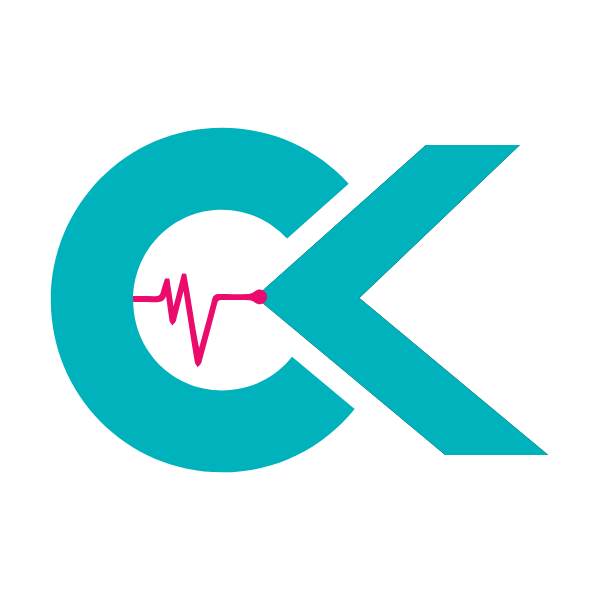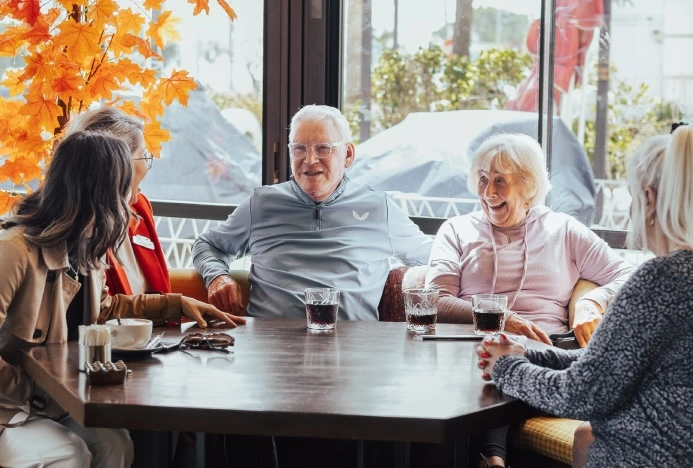The quest for a more youthful and sculpted appearance often leads individuals to explore options for skin tightening. As we age, our skin naturally loses its elasticity and firmness, a process exacerbated by factors such as sun exposure, significant weight fluctuations, and genetic predisposition. This gradual decline in skin quality can result in laxity, wrinkles, and an overall aged aesthetic that can significantly impact self-confidence. Fortunately, modern aesthetic medicine offers a broad spectrum of sophisticated solutions, ranging from minimally invasive non-surgical treatments to advanced surgical procedures, each designed to restore firmness and vitality to the skin. Understanding the underlying causes of skin laxity and the mechanisms through which these treatments work is crucial for making informed decisions about personal aesthetic goals.
Table of Contents
Skin laxity is primarily driven by the degradation and reduced production of two vital proteins: collagen and elastin. Collagen provides the skin with its structural integrity and firmness, while elastin grants it the ability to stretch and snap back into place. Over time, intrinsic aging processes, coupled with extrinsic factors like UV radiation exposure, smoking, and environmental pollutants, diminish the quantity and quality of these proteins. This leads to the characteristic sagging, crepiness, and fine lines associated with aging skin. Addressing these foundational issues is the core principle behind effective skin tightening interventions, which aim either to stimulate the body’s natural regenerative processes or to physically remove excess, lax skin.
Understanding Skin Laxity: Causes and Impact
Skin laxity, often perceived simply as a cosmetic concern, is a complex biological phenomenon influenced by a multitude of factors. A deeper understanding of these causes can illuminate why certain treatments are more effective for specific individuals and areas of the body.
Intrinsic Factors of Skin Aging
- Genetics: Our genetic makeup plays a significant role in determining how quickly and prominently we experience skin aging. Some individuals are predisposed to earlier onset of collagen degradation or less robust elastin production.
- Natural Aging Process: As part of the chronological aging process, fibroblasts, the cells responsible for producing collagen and elastin, become less efficient. This leads to a gradual decline in the skin’s structural support and elasticity.
- Hormonal Changes: Fluctuations in hormone levels, particularly during menopause, can accelerate the loss of collagen and impact skin hydration, contributing to increased laxity.
Extrinsic Factors Accelerating Skin Sagging
- Sun Exposure (Photoaging): Ultraviolet (UV) radiation from the sun is one of the most significant contributors to premature skin aging. UV rays break down collagen and elastin fibers, leading to a phenomenon known as solar elastosis, which manifests as leathery, wrinkled, and loose skin.
- Smoking: Nicotine and other chemicals in cigarettes constrict blood vessels, reducing oxygen and nutrient supply to the skin. This impairs collagen and elastin production and accelerates their breakdown, leading to a duller complexion and increased laxity.
- Pollution: Environmental pollutants generate free radicals that damage skin cells and proteins, contributing to oxidative stress and premature aging.
- Significant Weight Loss: While beneficial for health, rapid or substantial weight loss often leaves behind excess, stretched skin that has lost its ability to retract. This is particularly noticeable in areas like the abdomen, arms, thighs, and face. For those who have undergone Weight Loss Surgery in Turkey, addressing subsequent skin laxity is a common concern.
- Lifestyle and Diet: Poor nutrition, inadequate hydration, and chronic stress can all negatively impact skin health and its ability to maintain firmness.
The cumulative effect of these factors results in visibly looser skin, a less defined facial contour, and a loss of youthful volume. Recognizing these influences is the first step in formulating an effective skin tightening strategy.
Non-Surgical Skin Tightening: Innovative Approaches
For individuals seeking improvement without the downtime and invasiveness of surgery, a range of non-surgical skin tightening treatments offers compelling results. These methods typically work by stimulating the body’s natural collagen production through various energy-based technologies.
Radiofrequency (RF) Skin Tightening
RF technology uses controlled heat to target the deeper layers of the skin, causing existing collagen fibers to contract and stimulating the production of new collagen. This leads to a gradual firming and lifting effect. Popular RF devices include Thermage and Exilis Elite.
Ultrasound Skin Tightening (HIFU)
High-Intensity Focused Ultrasound (HIFU), exemplified by Ultherapy, delivers precise ultrasound energy to specific depths beneath the skin. This energy creates thermal coagulation points, initiating a natural healing response that produces fresh collagen and elastin, resulting in a noticeable lift and tightening over several months.
Laser Skin Resurfacing
Fractionated CO2 and Erbium lasers create microscopic thermal zones in the skin, triggering the body’s natural wound-healing process and stimulating significant new collagen formation. While more aggressive than RF or HIFU, lasers offer impressive results for surface texture improvement alongside tightening.
Microneedling with Radiofrequency
This advanced technique combines the collagen-inducing benefits of microneedling with the deep heating of radiofrequency energy. Tiny needles create controlled micro-injuries, while RF energy is delivered directly into the dermis, maximizing collagen and elastin stimulation for enhanced tightening and textural improvement.
Injectable Sculptra
While not a direct tightening device, Sculptra is an injectable poly-L-lactic acid (PLLA) solution that works as a powerful collagen stimulator. Over several months, it encourages the body to produce its own collagen, gradually restoring lost volume and improving skin firmness.
Medical Research Insight: A study published in the Journal of Clinical and Aesthetic Dermatology by Alkhayat and colleagues (2018) investigated the efficacy and safety of a multi-source, phase-controlled radiofrequency device for non-invasive skin tightening. Their findings indicated that the device was effective in achieving noticeable skin tightening and contouring, particularly for facial and neck areas, with a favorable safety profile and minimal downtime. This research supports the growing body of evidence for the effectiveness of advanced radiofrequency technologies in stimulating collagen remodeling and providing non-surgical aesthetic improvements.
Surgical Skin Tightening: Definitive Solutions
For cases of significant skin laxity, particularly after substantial weight loss or pronounced aging, surgical interventions offer the most dramatic and long-lasting results. These procedures involve the physical removal of excess skin and the tightening of underlying tissues.
Facial and Neck Lifts
A Face & Neck Lift in Turkey are comprehensive procedures designed to address sagging skin on the face and neck, tighten underlying muscles, and redefine the jawline and neck contour. Excess skin is precisely trimmed, and the remaining skin is meticulously repositioned for a smoother, more youthful appearance.
Body Contouring Surgeries
Post-weight loss patients often require body contouring procedures to address excess skin on various parts of the body:
- Abdominoplasty (Tummy Tuck): Removes excess skin and fat from the abdomen and tightens the abdominal muscles.
- Arm Lift (Brachioplasty): Addresses sagging skin on the upper arms, often referred to as ‘bat wings’. You can learn more about Arm Lift in Turkey for specific details.
- Thigh Lift (Thighplasty): Tightens loose skin on the inner or outer thighs.
- Body Lift: A comprehensive procedure that may combine multiple lifts (e.g., abdomen, back, thighs) to address widespread skin laxity.
These surgical options, part of broader Plastic Surgery in Turkey offerings, provide the most significant transformation for severe skin laxity and are often tailored to the individual’s specific needs.
Choosing the Right Skin Tightening Treatment
Deciding on the most appropriate skin tightening treatment requires careful consideration of several factors:
- Degree of Laxity: Mild to moderate laxity can often be effectively managed with non-surgical methods. Severe laxity, particularly after significant weight loss, will typically necessitate surgical intervention.
- Desired Results: Non-surgical treatments offer gradual, subtle improvements. Surgical procedures provide more dramatic and immediate results.
- Downtime and Recovery: Non-surgical options generally have minimal to no downtime. Surgical procedures require a more extensive recovery period.
- Cost: Costs vary significantly between treatments. Non-surgical options are generally less expensive per session but may require multiple sessions. Surgical procedures represent a larger upfront investment.
- Area of Treatment: Some treatments are better suited for specific body areas (e.g., HIFU for facial lifting, RF for body contouring).
- Individual Health and Lifestyle: General health, skin type, and lifestyle habits can influence treatment suitability and outcomes.
A thorough consultation with a qualified and experienced medical professional is paramount. They can assess your unique situation, discuss your aesthetic goals, and recommend a personalized treatment plan.
Price Comparison: Skin Tightening in Turkey vs. United Kingdom
Many patients from the United Kingdom are increasingly looking abroad for high-quality medical aesthetic procedures, drawn by the significant cost savings and excellent standards of care available in countries like Turkey. Skin tightening treatments are no exception. Below is an approximate price comparison to illustrate the potential financial benefits of choosing Turkey for these procedures.
| Service/Item | Turkey Price (USD) | United Kingdom Price (GBP) |
|---|---|---|
| Non-Surgical RF (Face) | $800 – $1,500 | £1,500 – £3,000 |
| HIFU (Full Face & Neck) | $2,000 – $3,500 | £3,500 – £6,000 |
| Arm Lift Surgery | $3,500 – $5,500 | £4,500 – £7,000 |
| Thigh Lift Surgery | $4,000 – $6,000 | £5,000 – £8,000 |
| Mini Face Lift | $4,500 – $7,000 | £7,000 – £12,000 |
Note: Prices are approximate and can vary based on the clinic, the surgeon’s experience, the extent of the procedure, and additional services included. These figures aim to provide a general comparison for international patients.
General Comparison: Non-Surgical vs. Surgical Skin Tightening
Understanding the fundamental differences between non-surgical and surgical skin tightening is crucial for patients weighing their options. Each approach has distinct advantages and limitations regarding efficacy, invasiveness, recovery, and cost.
| Factor | Non-Surgical Methods | Surgical Procedures |
|---|---|---|
| Invasiveness | Minimal to non-invasive | Invasive (requires incisions) |
| Anesthesia | Topical numbing cream or local | Local, sedation, or general |
| Results | Gradual, subtle to moderate | Dramatic, significant |
| Downtime | Minimal to none | Significant (weeks to months) |
| Duration of Results | 1-2 years (requires maintenance) | 5-10+ years (long-lasting) |
| Cost | Lower per session (multiple needed) | Higher upfront investment |
| Ideal For | Mild to moderate laxity, prevention | Moderate to severe laxity |
CK Health Turkey: Your Partner for Skin Tightening Solutions
At CK Health Turkey, we understand the profound desire for renewed confidence that comes with firmer, more youthful skin. As a premier destination for international patients, particularly those from the UK, we are committed to providing world-class skin tightening treatments within an environment of exceptional care and affordability. Our network of accredited hospitals and highly experienced surgeons and aesthetic specialists are adept at a full spectrum of procedures, from advanced non-surgical techniques like HIFU and Radiofrequency to transformative surgical interventions such as facelifts, arm lifts, and thigh lifts.
We pride ourselves on a patient-centric approach, ensuring that every individual receives a personalized treatment plan tailored to their unique needs and aesthetic goals. Our comprehensive packages often include not only the procedure itself but also accommodation, transfers, and dedicated patient support, making your medical journey seamless and stress-free. With CK Health Turkey, you benefit from significant cost savings without compromising on quality or safety. Whether you seek to address facial laxity or require extensive body contouring after weight loss, our team is equipped to guide you through every step of your transformation.
Take the first step towards a more confident you. Contact CK Health Turkey today for a personalized consultation or visit our website to explore our extensive range of aesthetic and reconstructive services.
The pursuit of skin tightening is a journey towards renewed confidence and self-image. With the array of advanced treatments available today, individuals have more options than ever to achieve their aesthetic goals. From the subtle enhancements offered by non-surgical technologies to the profound transformations provided by surgical interventions, selecting the right approach hinges on a clear understanding of personal needs, realistic expectations, and professional guidance. Turkey stands out as a compelling choice for international patients, combining high-quality medical expertise with cost-effectiveness, ensuring that achieving firmer, more radiant skin is both accessible and attainable.
FAQs
What causes skin to lose its elasticity?
Skin loses elasticity primarily due to the breakdown and decreased production of collagen and elastin, vital proteins responsible for skin firmness and flexibility. Factors like aging, sun exposure, genetics, smoking, and significant weight changes accelerate this process.
Are non-surgical skin tightening treatments effective?
Yes, non-surgical treatments can be very effective for mild to moderate skin laxity. Technologies like radiofrequency (RF) and high-intensity focused ultrasound (HIFU) stimulate the body’s natural collagen production, leading to gradual firming and lifting over several months.
How long do non-surgical skin tightening results last?
Results from non-surgical skin tightening typically last for 1 to 2 years, depending on the treatment type, individual aging process, and lifestyle. Maintenance sessions are often recommended to prolong the effects.
When should I consider surgical skin tightening instead of non-surgical options?
Surgical skin tightening is generally recommended for individuals with moderate to severe skin laxity, particularly after significant weight loss, or when non-surgical methods cannot achieve the desired level of improvement. Surgeries like facelifts, arm lifts, and tummy tucks offer more dramatic and long-lasting results.
What is the recovery like after surgical skin tightening?
Recovery from surgical skin tightening varies depending on the specific procedure but typically involves several weeks of swelling, bruising, and discomfort. Patients usually need to wear compression garments and limit physical activity for a period before resuming normal routines.
Is skin tightening safe in Turkey?
Turkey has become a leading destination for medical tourism, offering state-of-the-art facilities and highly qualified medical professionals. When choosing a reputable clinic like CK Health Turkey, patients can expect high safety standards, accredited facilities, and experienced surgeons.
Can diet and exercise help with skin tightening?
While diet and exercise are crucial for overall health and can improve skin appearance, they generally cannot reverse significant skin laxity caused by aging or substantial weight loss. They can, however, help maintain the results of aesthetic treatments by supporting healthy skin and muscle tone.
What areas of the body can be treated with skin tightening?
Skin tightening treatments can be applied to various areas, including the face, neck, décolletage, arms, abdomen, thighs, and buttocks. The specific treatment chosen will depend on the area and the degree of laxity.



